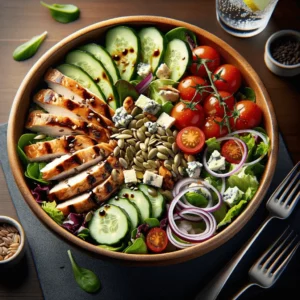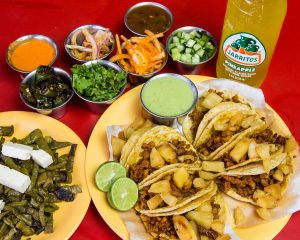Small Bites, Big Flavors: Tapas Bar Restaurants
The allure of tapas lies not just in the bite-sized dishes themselves but in the very essence of the shared dining experience they represent. Originating from Spain, tapas bars have spread worldwide, bringing with them a culture of social dining, where conversation flows as freely as the wine, and multiple dishes create a gastronomic mosaic on the table.
A Tradition Rooted in Conviviality
The Legend of Tapas
Several tales surround the origins of tapas. One suggests that Andalusian taverns would cover (or “tapar” in Spanish) wine glasses with slices of bread or meat to protect the drink from sand and flies, eventually leading to the creation of a variety of covers, or tapas.
More than Just Food
A visit to a tapas bar is as much about social interaction as it is about food. It’s a time to unwind, discuss the day, and bond over shared plates.
The Diverse World of Tapas
Classic Offerings
From “albóndigas” (meatballs) to “gambas al ajillo” (garlic shrimp), classic tapas dishes showcase a range of flavors, textures, and culinary techniques.
Innovative Bites
Modern tapas bars often experiment, blending traditional recipes with international ingredients or techniques, yielding innovative and delightful creations.
Pairings and Pleasures
Wine and Tapas
No tapas experience is complete without wine. Whether it’s a refreshing Albariño or a robust Rioja, the right wine can elevate a tapa’s flavors.
From Savory to Sweet
While savory dishes dominate tapas menus, many establishments also offer sweet tapas, such as “churros” with chocolate or bite-sized flans, rounding off the experience.
Conclusion
Tapas bar restaurants are vibrant hubs of culture, culinary delight, and community. These venues transform dining into an event, where each small dish contributes to a grand celebration of life’s simple pleasures. Whether you’re drawn to the traditional flavors of Spain or the innovative twists of modern fusion, a visit to a tapas bar promises an unforgettable gastronomic journey.
FAQs
1. Are all tapas dishes served cold?
No. While many tapas are cold, such as “ensaladilla rusa” or “boquerones en vinagre,” plenty are served hot, including favorites like “patatas bravas” or “croquetas.”
2. Is it customary to order several tapas at once?
Yes. The idea behind tapas is to order multiple dishes, sharing them with your companions, and potentially ordering more as the evening progresses.
3. What’s the difference between a tapa and a pintxo?
While both are small dishes, a “pintxo” typically hails from the Basque Country and involves a small slice of bread with toppings, often secured with a toothpick.
4. Are tapas bars suitable for vegetarians?
Certainly. While many traditional tapas feature meat or seafood, there’s also a range of vegetarian options, from “pimientos de padrón” to “tortilla española.”
5. How do I navigate a tapas menu if I don’t speak Spanish?
Many tapas bars, especially in tourist areas or outside Spain, offer bilingual menus. Don’t hesitate to ask the staff for recommendations—they’re often eager to share their favorites!































